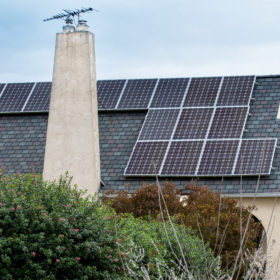
Researchers in India have developed a new method to operate a solar-plus-storage system in a stable manner under varying operating conditions. They claim that their novel technique enables the regulation of the DC link voltage and is able to compensate reactive power while supplying active power to a local load in grid-connected operation.
A group of researchers at India’s National Institute of Technology has developed a new technique for DC voltage regulation in solar-plus-storage power generators which is claimed to enable the system operation in a stable manner under varying operating conditions.
Presented in the paper Solar PV-BES in distribution system with novel technique for DC voltage regulation, published in Engineering Science and Technology, an International Journal, the new technique was conceived for the coordinated regulation of active power along with reactive power compensation of a grid-connected PV system (SPV) linked to battery energy storage (BES). A “curve fitting toolbox in Simulink (MATLAB) is used to derive the controller equation for a novel DC voltage regulator,” the research team specified. “Variations in solar irradiance and load changes are also simulated to verify the effectiveness of the proposed system.”
The PV system is linked to a DC link capacitor via a DC/DC converter and the storage system is coupled to the capacitor through buck-boost DC/DC converter. “The DC side of the structure is connected to the AC side using [a] DC/AC converter,” the academics explained. “The control structure measures the voltages at [a] point of common coupling (PCC) and grid side and currents at load and SPV-BES side[s].” The resulting signals are then fed to the controller for the implementation of energy flow management.
PV system yield is optimized through a perturb and observe (P&O) algorithm for maximum power point tracking (MPPT). The battery is charged when solar irradiance is higher than a certain value determined by the voltage measurement of the PV system. It is then discharged when the solar array is incapable to supply the loads under reduced irradiance. “The converter permits the energy to flow in both direction[s] i.e. to the battery and from the battery,” the Indian team stated.
The DC/AC converter is responsible for delivering a stable AC voltage for the loads connected at the point of common coupling (PCC) and the capacitor voltage is maintained for stable operation of the set-up. “The controller enables the PV-battery set-up to not only supply active power but also compensate reactive power at [the] PCC,” the scientists added. “The PV-battery set-up is working in the grid-tied mode of operation for the entire simulation.”
According to their measurements, the DC link voltage was constant almost during the entire simulation period under variable operating conditions. “In addition, the capability of [the] hybrid system to compensate reactive power has also been utilized to improve the system stability and power quality,” they concluded.
Lắp đặt điện mặt trời Khải Minh Tech
https://ift.tt/2X7bF6x
0906633505
info.khaiminhtech@gmail.com
80/39 Trần Quang Diệu, Phường 14, Quận 3
Lắp đặt điện mặt trời Khải Minh Tech
https://ift.tt/2ZH4TRU
Không có nhận xét nào:
Đăng nhận xét